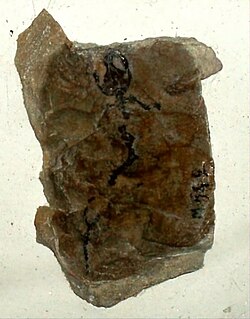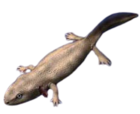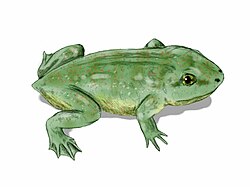| Celtedens Temporal range: | |
|---|---|
 | |
| Fossil of Celtedens megacephalus | |
 | |
| Holotype specimen of Celtedens ibericus | |
| Scientific classification | |
| Kingdom: | Animalia |
| Phylum: | Chordata |
| Class: | Amphibia |
| Order: | † Allocaudata |
| Family: | † Albanerpetontidae |
| Genus: | † Celtedens McGowan and Evans, 1995 |
| Species | |
| |
Celtedens is an extinct genus of albanerpetontid amphibian from the Early Cretaceous of England, Spain, Sweden and Italy, and the Late Jurassic of Portugal. [1] [2]




